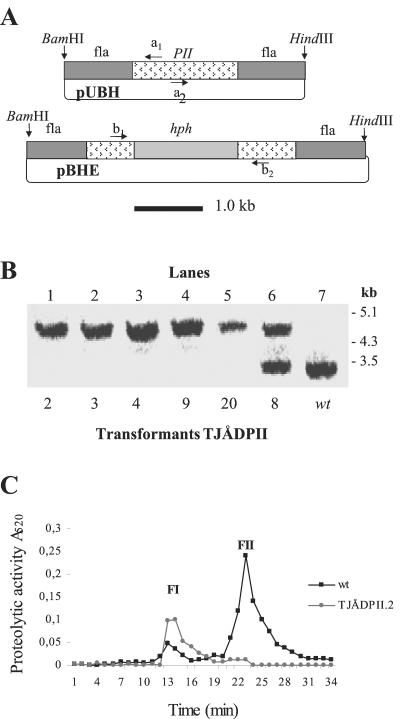FIG. 2.
Construction of ΔPII mutants. (A) Gene disruption vector pBHE constructed by inserting the hph gene (Escherichia coli hygromycin B resistance gene, under the control of the trpC promoter from A. nidulans) in the open reading frame of PII present in the vector pUBH. fla, flanking region. Arrows indicate PCR primers used for cloning (a1 and a2) and for screening (b1 and b2). (B) Southern analysis of gene disruption mutants obtained using the vector pBHE. Genomic DNA was digested with BamHI/HindIII and probed with a 32P-labeled fragment of the PII gene (BamHI/HindIII fragment excised from pUBH) (30). Lanes 1 to 5 are mutants (designated TJÅDPII.2, -3, -4, -9, and -20) for which the mutated PII gene has been homologously integrated into the genome. Lane 6 shows a mutant (TJÅDPII.8) containing nonhomologous integration of the mutated PII gene. Lane 7 is the wild type. (C) Partial purification of the extracellular serine proteases produced by the wild type and the deletion mutant TJÅDPII.2 of A. oligospora when grown in liquid medium that stimulated the formation of infection structures (traps). The extracts were applied on a Mono Q column equilibrated with a Tris-HCl buffer (pH 7.5) and eluted with a gradient of NaCl using a flow of 1 ml/min (27). One-milliliter fractions were collected and assayed for protease activity by using the chromogenic substrate Azocoll.

